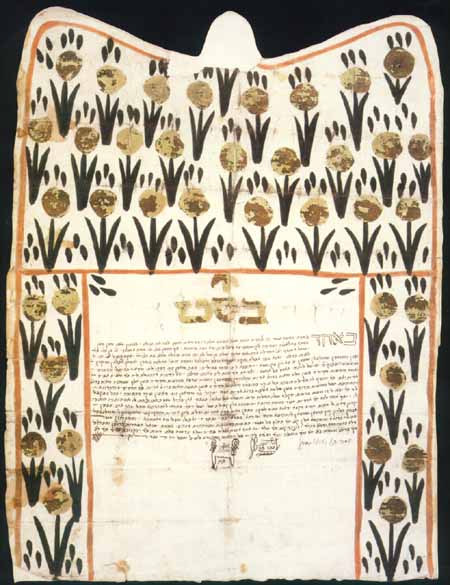Adding Beauty to Holiness: Islamic Influence
Galata was a section of Constantinople inhabited by Jews in the nineteenth century. There on 17 Tevet, 5601 (January 10, 1841), the wedding of Shamma ben Yisrael Ashkenazi and Mirele bat Ya'akov Kopel was solemnized. The ketubah reflects the Islamic environment and is indicative of the artistic sensibilities and skills of the Jewish calligraphers. it is not representational; flowers and trees are suggested, but not depicted. The colors are strong-black, green, and metallic gold-so that the bold primitive nature of the illustrations makes them look modernistic. The serviceable calligraphy makes no attempt at beauty. The ornamentation is typical of that time and place, as may be seen from a ketubah written in Constantinople a decade earlier, which is now in the British Library. The Islamic venue would, of course, preclude depictions of man or nature; its strong primitive harshness may well indicate the quality of life in that place at that time.
 |
Sources: Abraham J. Karp, From the Ends of the Earth: Judaic Treasures of the Library of Congress, (DC: Library of Congress, 1991).


